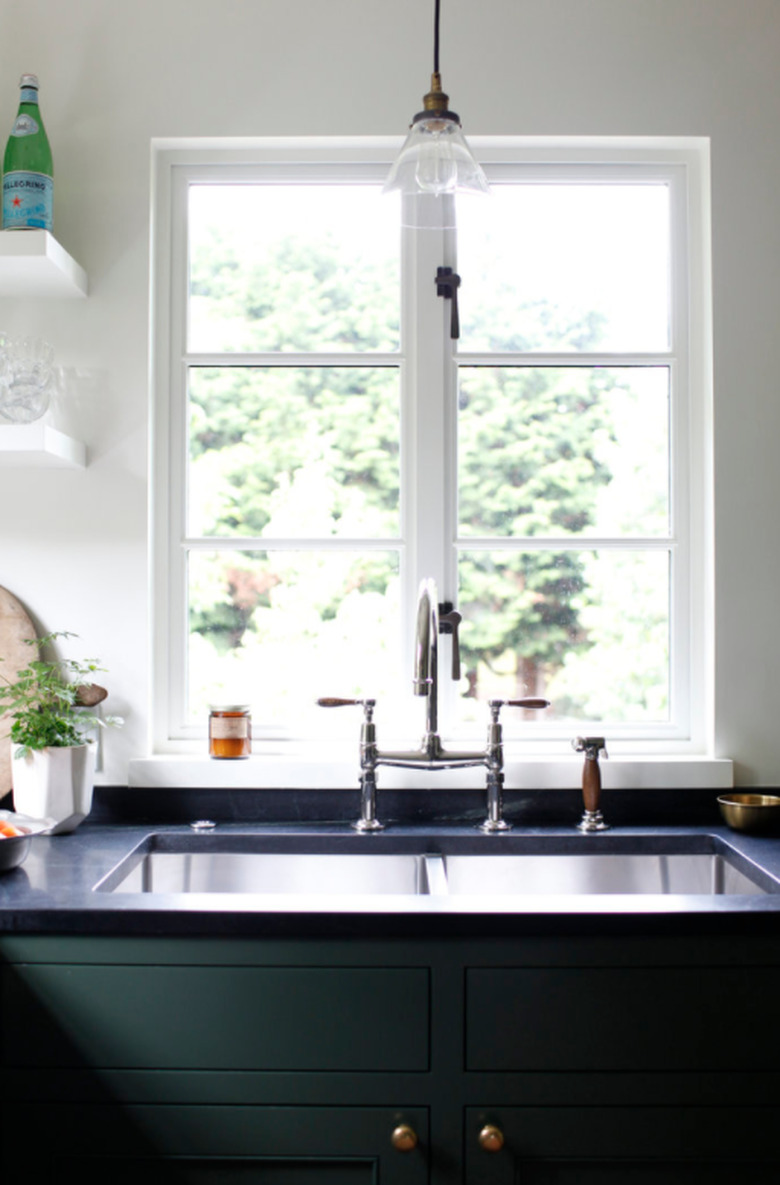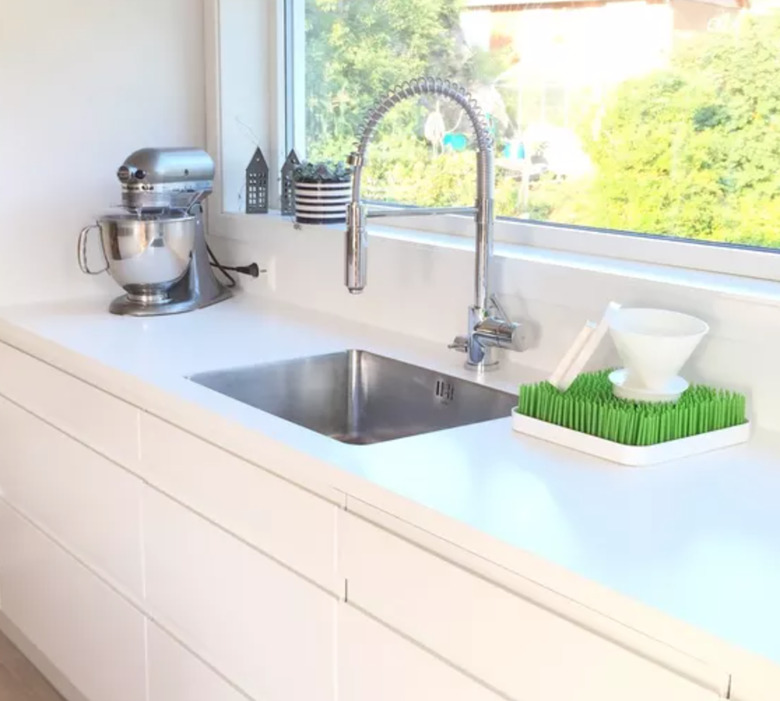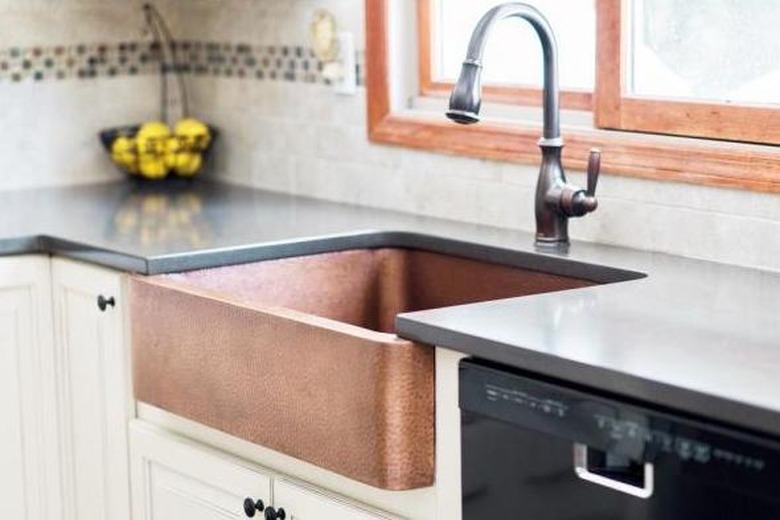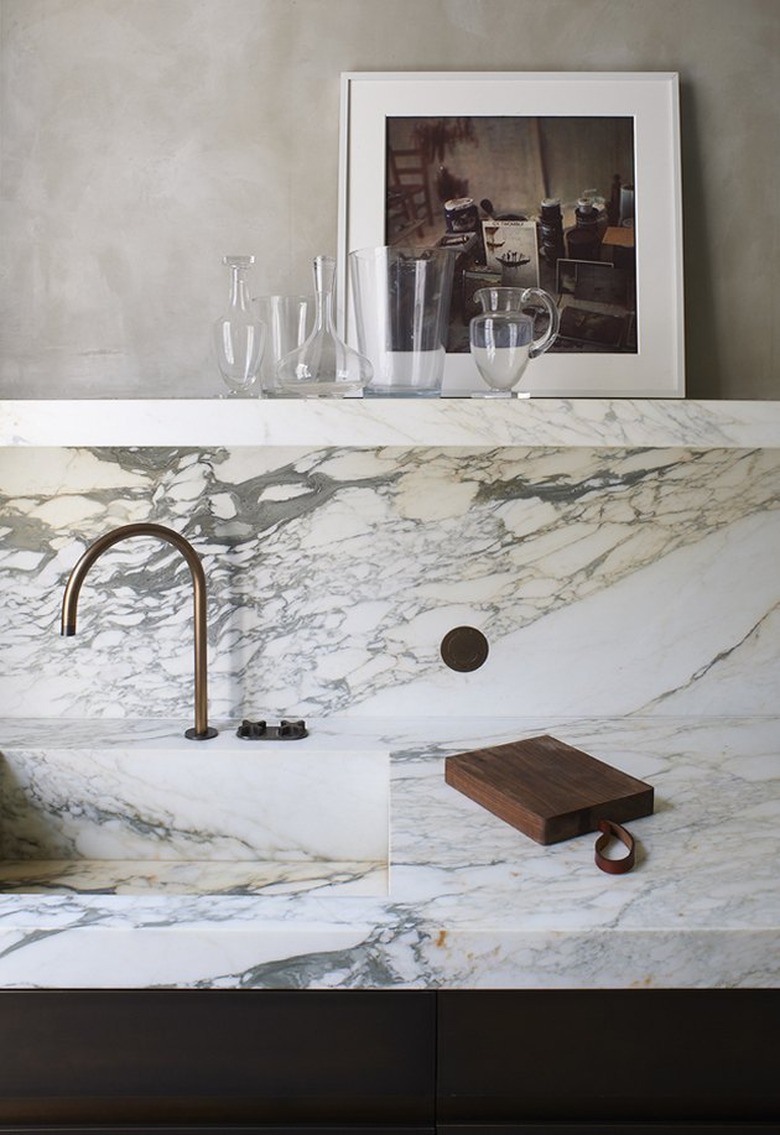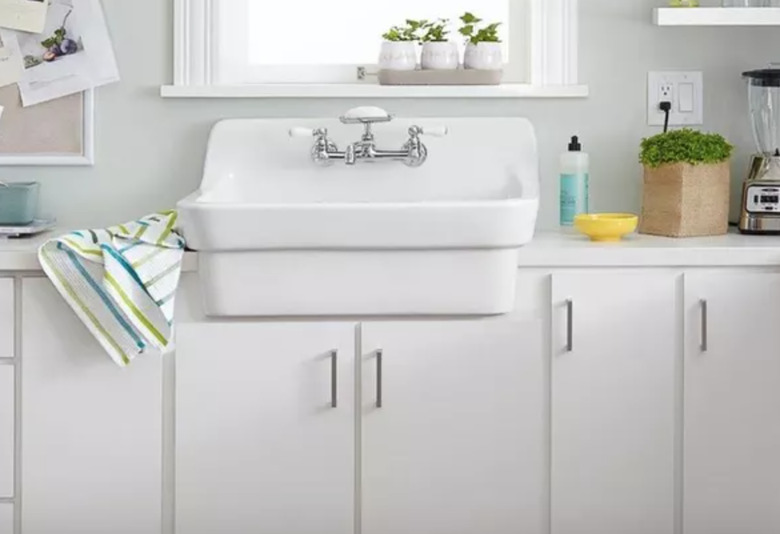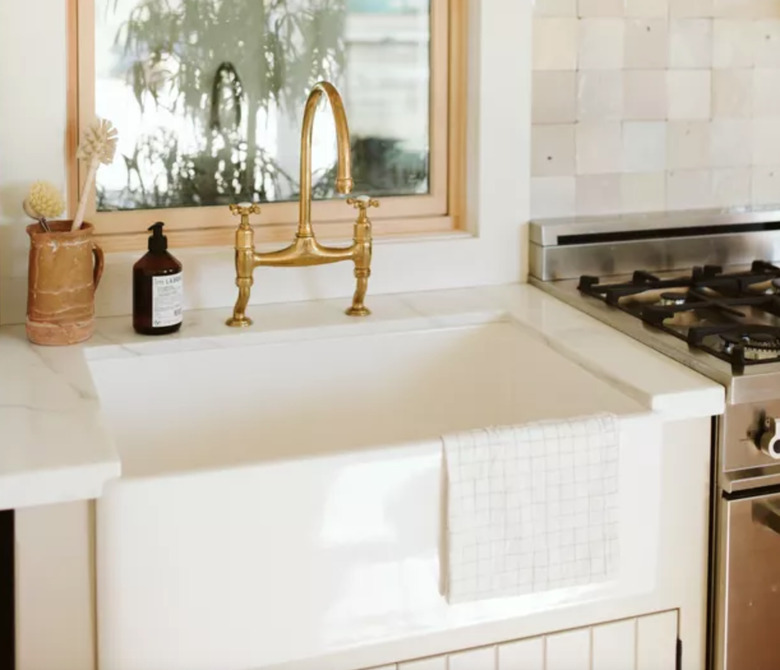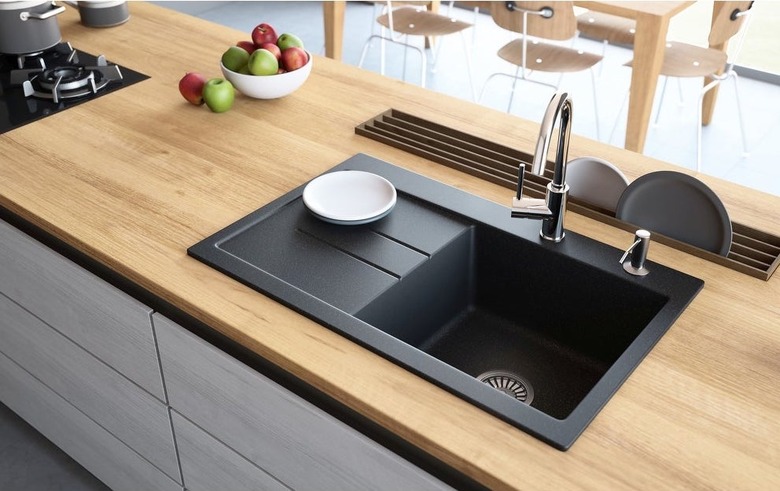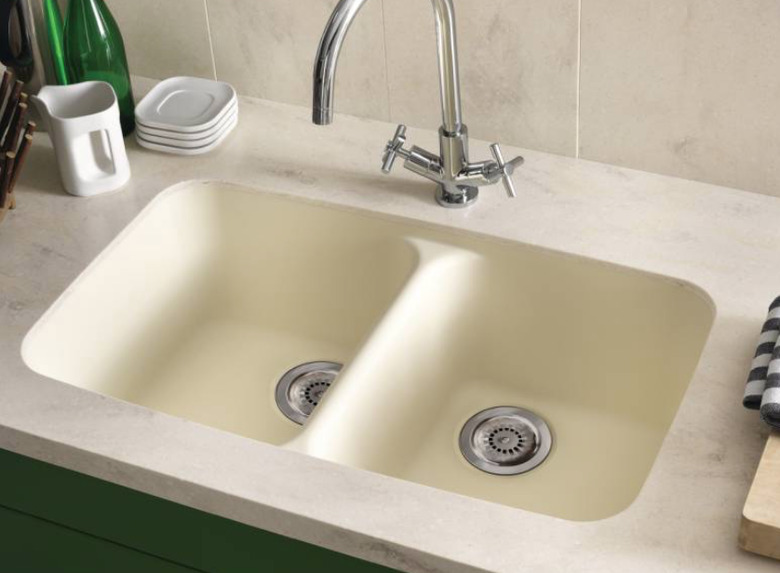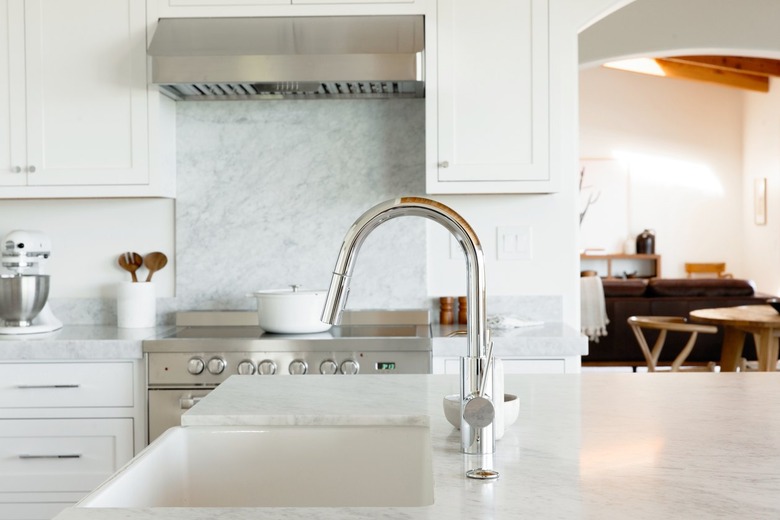What Are The Most Durable Kitchen Sink Materials? These Are The 7 Best Ranked
If the kitchen is the heart of the home, then the kitchen sink is what takes the most beating. From hot pans and utensils that can scratch to a plethora of liquids and foods that can stain, you want a kitchen sink that looks beautiful but will last for years. Comparing the options helps you choose the most durable sink material that also fits your personal style. Many different options hold up well and offer resistance to different types of potential kitchen damage. Let's break down the best kitchen sink materials by how they're used in your household.
Sinks for High-Use Kitchens
Sinks for High-Use Kitchens
If you cook every meal and are really into baking, you'll need a sink that can withstand constant use. Long-lasting materials are your best bet, here. And the good news is, you won't have to sacrifice good looks for functionality. Many extremely durable sink materials look just as good as they perform. Plus, they can match a multitude of different aesthetics and styles. Take a look at the best kitchen sink materials first.
1. Stainless Steel Sinks
Stainless steel ranks as the top material for kitchen sinks and for good reason. It's a classic and sleek addition to any kitchen style and never looks dated.
The Pros: It's one of the most affordable materials, making it a fit for all budgets. The versatile look fits into almost any style of kitchen, and the metal is durable. This sleek metal is also resistant to heat, which protects the sink from hot pans or liquids.
For stainless steel sinks, the gauge describes the thickness of the material and is represented as a number that usually ranges between 16 and 22. The lower the number the thicker the metal. So a 16-gauge stainless steel sink is thicker than a 22-gauge option, and lower gauges usually cost more. Most stainless steel sinks are durable and long-lasting, but a thicker sink with a lower gauge may be less likely to dent.
The Cons: Stainless steel is one of the best kitchen sink material choices because it rarely stains, especially if you clean it regularly, but hard water can leave spots. You can also scratch the surface if you clean it with harsh, abrasive cleaners or tools. Additionally, it tends to be one of the noisiest options, although a thicker sink and noise-dampening pads on the bottom can make this option quieter.
Where to Find Stainless Steel Kitchen Sinks:
2. Copper Sinks
For another kitchen sink material that's truly built to last, try copper. It may be on the high end of the price range, but this metal offers a distinct look and lasts for generations.
The Pros: Copper is antimicrobial, which comes in handy for food prep and dishwashing. The material also doesn't rust, so it's suitable for kitchen use.
Like stainless steel sinks, copper options come in different gauges; 14- to 18-gauge sinks offer the best durability but also have the highest prices. Thicker sinks with a lower gauge are often more resistant to denting, while cheap copper sinks are often thinner and lower quality, making them more likely to show damage and wear. Some include zinc to improve the strength, but look for one that's at least 99 percent pure copper.
The Cons: It patinas naturally over time, which is difficult to avoid, so be sure you like the aged look if you go this route. Moreover, copper can react poorly to acids and cleaners.
Where to Find Copper Kitchen Sinks:
3. Stone Sinks
Solid stone sinks, whether in granite, marble, or beyond, up the ante of your kitchen's style. And the glow-up gets major if they're integrated into the countertop. The seamless look is an instant stunner.
The Pros: The material is extremely durable and incredibly timeless.
The Cons: Solid stone sinks are pretty much at the top of the price range, so be prepared to spend a lot for one. Additionally, while the material is tough, it requires regular sealing since it's porous. When sealed, however, these sinks hold up well against scratches, stains, and similar damage.
A granite, marble, slate, or quartz sink will also be quite heavy because of the natural stone. That means you'll likely need to reinforce your cabinetry and countertops for proper installation. Darker colors of stone may show scratches or other damage more prominently than lighter color options.
Where to Find Stone Kitchen Sinks:
Sinks for Medium-Use Kitchens
Sinks for Medium-Use Kitchens
If your kitchen only handles a couple of meals every few days, one of these durable and dependable materials might be the right fit. And even though these basins might not be equipped for the rigorous use of a professional cook space, they don't sacrifice style. Homeowners, if you use your dishwasher primarily but love the look of a classic kitchen, you're in the right place.
1. Enameled Cast Iron Sinks
Cast iron sinks with glass-based glazes are timeless and old school in all the right ways. The base material is incredibly strong, but it rusts when exposed to moisture. So to be used in a sink, the cast iron gets a coating of porcelain enamel. The additive creates a smooth, glossy finish and often comes in a variety of colors to customize your kitchen sink look.
The Pros: The enamel coating resists staining and is easy to clean. Plus, it doesn't fade over time. It can also increase your home value.
The Cons: Enamel sinks are heavy and need the support of reinforced counters and cabinets. Even though the enamel is durable, it's also susceptible to chipping or scratching, which usually happens if you drop something heavy into the sink. You can scratch or damage the surface if you use abrasive or acidic cleaners. Scratch deep enough, and you'll expose the cast iron and potentially cause rust. You can, however, refinish the sink with a DIY kit or hire a professional to do the restoration for you.
Where to Find Cast Iron Kitchen Sinks:
2. Fireclay Sinks
Fireclay sinks resemble cast iron but are more resistant to stains and easy to keep clean. To make the material, a mix of clay and minerals is fired at high temperatures and coated in a special glaze to form a strong, durable base. You'll often see single basin fireclay sinks in the farmhouse style with an exposed apron. While you can find them in various colors, popular options are typically white or cream.
The Pros: Fireclay resists stains and scratches better than an enameled cast iron sink. They also resist acids in the kitchen.
The Cons: They won't rust but can crack due to vibrations, so this material is not ideal if you have a garbage disposal. These sinks are also very heavy and need reinforcements to support the weight.
Where to Find Fireclay Kitchen Sinks:
Fossil Blu
Sinks for Low-Use Kitchens
Sinks for Low-Use Kitchens
If your kitchen design budget is tight and you eat takeout more than you use your pots and pans, save some dough for your favorite dim sum and try these sinks instead. They'll be picture-ready but allow you to focus on pricier aspects of your kitchen design. Think gorgeous floor tiles or a top-notch marble backsplash.
1. Composite Material Sinks
If a solid stone kitchen sink is out of your price range, consider a composite option. This material consists of stone dust mixed with resin to create the look of rock at a lower price point. Crusted granite and crusted quartz are the two most common materials mixed with the resin. Unlike natural stone basins, which often have a variegated feel due to natural patterns and pigmentation, composite sinks have a consistent look with a variety of color and style options.
The Pros: Composite sinks resist scratching and staining, withstand household acids, and don't show water spots. You don't have to seal them as you do with natural stone.
The Cons: Composite material can crack or get damaged when exposed to extreme heat, such as a hot pan placed on the surface.
Where to Find Composite Kitchen Sinks:
2. Solid Surface Sinks
Solid surface sinks use acrylic resin as a primary material to create a nonporous surface. This durable basin looks similar to an enameled option.
The Pros: It's much lighter than enamel, which makes it easier to install. If damage does happen, you may be able to repair it. You can also sand and polish away most scratches and chips.
The Cons: While solid surface sinks are more affordable than many others, it's a good idea to avoid the cheapest options. They sometimes use calcium powder as a filler material, which can cause the surface to yellow quickly. Higher quality acrylic materials retain their true color and gloss.
Where to Find Solid Surface Sinks:
Let's Review
Let's Review
It's important to realize not all kitchen sink materials are made equal, but where certain stones or fabrications fall short in durability they may succeed expectations when it comes to style and price. So how do you pick the best one for you? Consider how hard you use your current cook space. Do you spend multiple hours each day banging around pots and pans, washing dishes, and planning meals? If so, an incredibly durable sink material — such as stainless steel, marble, or copper — is probably best for your household. Do you spend more time admiring the look of your cook space than actually using it? Do you mostly skip washing bowls and plates and use carryout containers instead? In that case, feel free to cut costs, and go with a less durable basin. A composite material or solid surface sink might be much more appropriate. If you fall in the middle of these usage levels, go with an enameled cast iron or fireclay material. Your pockets will thank you but you won't be sacrificing style for durability.
As for those who love to give their cook space thorough scrub-downs, you'll likely want to stick with a sink material in the middle or high usage range. Certain cleaning agents can be incredibly abrasive to composite or solid surface basins. Keep in mind, though, that any sink can be scratched or partially damaged by the wrong cleaning tools.
